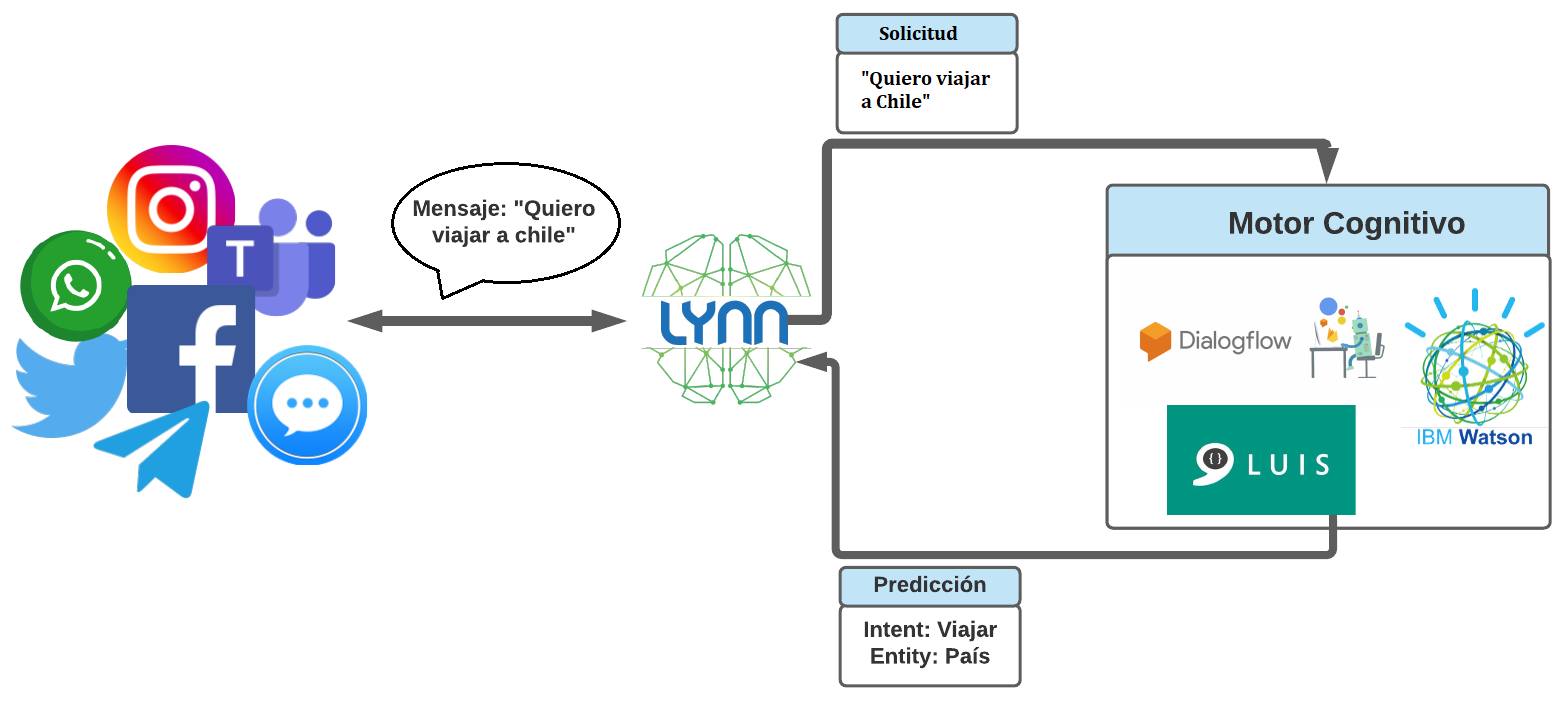Architecture
Lynn's designer is oriented towards the structuring of cognitive models, adopting the widely-used intention-entity model, which facilitates the deployment and structuring of models with training, creation, and elimination capabilities from the tenant design. This is one of the main advantages of Lynn and will allow us to integrate any cognitive engine we want.
Given the above, in Lynn you can recognize elements such as:
-
Intents
-
Entities
and other elements that will help us build the flow:
-
Cases
-
Actions
-
Routes
Now that we know the basic concepts of a cognitive engine, we can explain how Lynn integrates with them. In the following image we can understand the behavior between Lynn's communication channels and cognitive engines.

The previous image describes the process from when a user sends a message until they get the response predicted by the cognitive engine.
-
The user gives an input (message), said input can be a voice command, a request or simply a question.
-
The message reaches Lynn, the message is processed and sent to the cognitive engine evaluator defined in its Tenant.
-
When the message is received by the cognitive engine, the natural language compression module extracts each of the parameters of said input and finally returns the response (prediction) to Lynn.
-
Once Lynn receives the response from the cognitive engine, the flow associated with the intention is interpreted and executed, so that the end client does not see the cognitive result but the result of the flow associated with the intention accepted by Lynn.